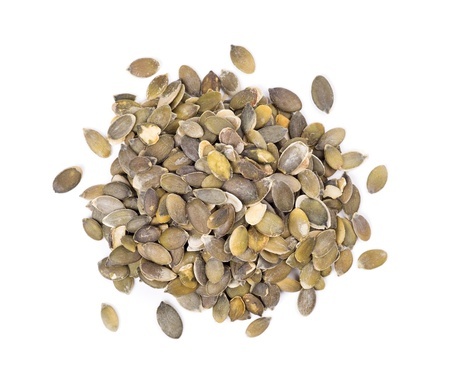When it comes to cancer fighting foods, it’s important to remember that balance is key. Superfoods should be part of a balanced diet – with the aim of eating as healthy as you can most of the time.
Here is a summary of the foods I talked about at the recent Big C workshops and in an interview with BBC Radio Norfolk last week. I chose these foods because they are fairly common ingredients that many of us already have in our store cupboards, as well as being the subject of research into the fight against cancer. I do hope you enjoy these foods, and my top tips on how to use them. Do get in touch if you’d like any more advice and to book an appointment to see me – my clinic number is 01603 631900. I see many clients who have been given a cancer diagnosis or have just finished treatment, and they want support on finding the right diet for them to support their health in the future.
- Broccoli: a rich source of glucoraphanin, as well as soluble fibre, vitamin C, calcium, magnesium and other important nutrients. How to include more broccoli in your diet:
- Steam fresh/frozen broccoli
- Slice finely and use raw in salad (with some olive oil to support carotenoid absorption)
- Broccoli soup (use the stalks as well!)
- Stir fried – with oyster sauce, ginger, chilli, sesame seeds
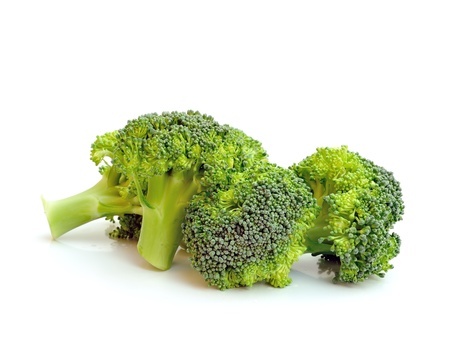
- Broccoli quiche, vegetable tart, tempura broccoli
- Broccoli superfood pizza (if you’re making your own base, you can blend some raw into the flour!)
- Frittata – a great way to use up any leftovers (Spanish omelette)
- Broccoli pesto – it’s very easy to make your own pesto! (use stalks)
- You can even blend up cooked broccoli and add to cake and brownie recipes – see recipe on superbroccoli.info
- In smoothies – blended with avocado and banana, selection of cucumber, apple/pear, ginger, spritz of lemon or lime, carrot, pineapple, red pepper. Only use a few heads of broccoli.
- The stalks/leftovers… don’t just throw these away, you can stir fry, steam and add to a grilled cheese sandwich, chop finely and add to meatballs, blend into pasta sauces, mash into mashed potato
- Turmeric: this mild spice gives the yellow colouring we associate with many Asian dishes. Studies have shown in countries where turmeric is eaten daily, there is a lower risk of many different types of cancers, and further cellular research is being done into the active component curcumin.
If you’ve never used turmeric before – don’t be afraid. The flavour is very mild, and it doesn’t really change the flavour of any dishes, just the colour! Here are some ideas you can try:
- Add half a teaspoon to scramble/frittata – or try my crustless quiche recipe.
- Sprinkle over roasted vegetables
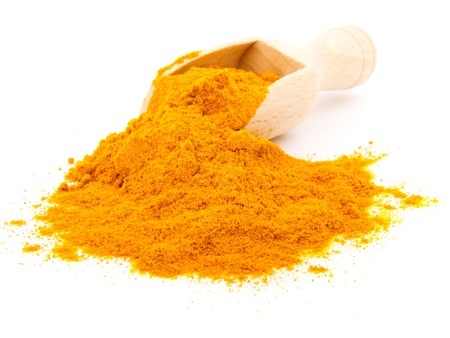
- Add to rice for colour/flavour
- Add to kedgeree
- Spicy popcorn
- Sprinkle over leafy greens
- Flavour soups – e.g. creamy curried cauliflower soup/spicy lentil soup
- Curries, dahls
- Turmeric tea – simmer with milk and honey
- Spicy tea – make a broth with ginger, garlic, lemon, orange juice and peppercorns
- South African hot toddy (milk, cinnamon, whisky, honey, turmeric)
- Smoothie – add a good pinch to any smoothie
- Pan fry a handful of seeds with some salt, pepper and pinch of turmeric
- Orange turmeric cake
Also use black pepper alongside your turmeric, plus a little fat such as coconut or olive oil, as it can increase the absorption through your digestive system.
 Pumpkin Seeds: these little green seeds are a powerhouse of nutrients, rich in zinc and magnesium, the two minerals most commonly deficient in adults. One-quarter cup of pumpkin seeds contains nearly half of the recommended daily amount of magnesium. They also provide a good source of low fat protein and are rich in phytoestrogens and soluble fibre. All of these compounds are important for immune regulation, gut health and hormonal balance, which is why pumpkin seeds are on my list of top cancer fighting foods.
Pumpkin Seeds: these little green seeds are a powerhouse of nutrients, rich in zinc and magnesium, the two minerals most commonly deficient in adults. One-quarter cup of pumpkin seeds contains nearly half of the recommended daily amount of magnesium. They also provide a good source of low fat protein and are rich in phytoestrogens and soluble fibre. All of these compounds are important for immune regulation, gut health and hormonal balance, which is why pumpkin seeds are on my list of top cancer fighting foods.
I also often recommend that people have a snack of pumpkin seeds before bedtime, or an oatcake with pumpkin seed butter, as they are rich in the amino acid tryptophan – the precursor to serotonin, which can help to support the relaxation response and therefore sleep. Here are my top ideas on how to get more pumpkin seeds into your diet:
- Great as a snack – either plain. Or you can toast them in a pan with turmeric, soya sauce, pinch of chilli…. Or vanilla and bit of honey.
- Sprinkle onto porridge, breakfast cereal.
- Use ground pumpkin seeds, which are nice in yoghurt or added to cereals, soups or porridge. You can also add them to baking – flapjacks, cakes, biscuits.
- Pumpkin seed butter – a great alternative to butter or margarine, available in most health food stores
- Add to pesto, sauces
- Chop to make a crispy crumb on chicken or fish – great mixed with breadcrumbs, or sun dried tomato and cream cheese. Green fish fingers/chicken nuggets, yum!
- Add to stir fries, salad… get sprinkling!
- Add ground to smoothies
- Add to baking – breads, cakes, muffins – either whole or ground.
- Oily Fish: Sardines, Mackerel, Salmon, Trout, Herring, Seafood also. The long chain
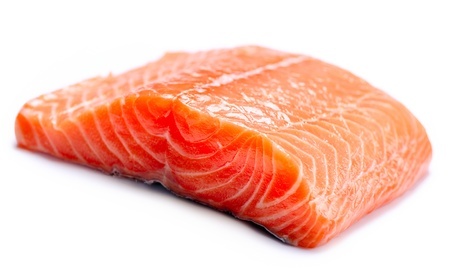 fats in oily fish are the essential polyunsaturated fats, omega 3s, which are highly anti-inflammatory. Oily fish is also rich in Vitamin A – an important antioxidant, as well as calcium, B12, iron and other vitamins and minerals, including small amounts of Vitamin D. Also a good source of protein. If your or a family member don’t like oily fish, here are some ideas on how to use it:
fats in oily fish are the essential polyunsaturated fats, omega 3s, which are highly anti-inflammatory. Oily fish is also rich in Vitamin A – an important antioxidant, as well as calcium, B12, iron and other vitamins and minerals, including small amounts of Vitamin D. Also a good source of protein. If your or a family member don’t like oily fish, here are some ideas on how to use it:
- Bake, steam, grill, gently pan fry…. Avoid frying in lots of oil/chargrilling (destroy good fats)
- Cook in baking paper/foil parcels… add lots of different herbs, spices, ginger, wine, honey etc
- Fish cakes:- either use cooked fish, mix with mashed potato and sweet potato, chill, garlic, can coat in breadcrumbs. Or Swedish fish cake style: blend raw fish with bread crumbs, lemon juice & rind, coat with bread crumbs.
- Sushi: made with brown rice if possible
- Fish paté: blend smoked fish (or other fish) with natural yoghurt/silken tofu, herbs, season, lemon. Great with vegetable sticks or a salad.
- Creamy salmon tagliatelle with broccoli
- Fish with white sauce – most children like this.
- Fish kebabs: use a firm fish like tuna/monkfish or prawns, with lots of veg.
- Fish curry, Thai green curry with prawns or fish
- Fish broth, seafood chowder
- Mackeral Kedgeree
- Tempura prawns
- Prawn or salmon frittata
- Sardines on toast! Or roll mops.
- Beans and Pulses: Pulses and legumes are a great source of low fat protein, iron, calcium, zinc and B Vitamins. They are also rich in soluble fibre – which can help to regulate your digestive system (diets rich in soluble fibre have been linked to reduced risk of bowel cancers). Finally they provide a good source of phytoestrogens, which may help to support oestrogen regulation.
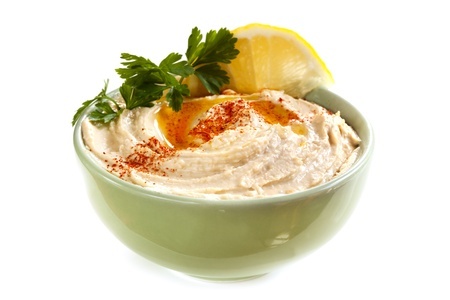 Here’s some tips on how to get more beans and pulses into your diet:
Here’s some tips on how to get more beans and pulses into your diet:
- Tinned or dried? Either is fine… depends on how much time you have. You can also buy ready cooked in cartons or vacuum packed.
- Better to soak dried beans – removes some of the sugars which causes wind/breaks down phytic acid/releases nutrients. Rinse dried beans under running water and pick out any debris or blemished beans. Soak in large saucepan of water – cover 3 inches of water. Cover for 6 hours minimum, or overnight. Some add 1 tablespoon lemon juice/vinegar per cup beans. To cook – most beans need 90 mins to one hour, boiled (don’t use soaking water). Some pulses can be cooked straight from dried – e.g. split red lentils.
- Dips and hummus: it’s very easy to make your own hummus. Can chickpeas, tahini (sesame seed paste), garlic, lemon, salt, pepper, olive oil. Dips: blend cooked beans/pulses with natural yoghurt/silken tofu, with herbs, spices
- Use beans/pulses to add protein to soups
- Beans on toast! Always choose low sugar varieties
- Bulking out meat dishes – make your meat go further by adding a tin of beans or pulses – spag bol for 2 nights not one!
- Cassoulet… great in slow cooker with sausages.
- Chillis and curries
- Chickpea or lentil burgers
- Add beans to chocolate brownies! Kidney beans are great in chocolate brownies… added protein, nutrients and a creamy texture
- Silken tofu – great to make smoothies, desserts, dips. Blend with frozen fruit for an instant icecream. Add to smoothies for a protein rich snack
If you, or someone you know is affected by cancer, and you would like advice on how to support an optimal diet to suit their specific health needs, please get in touch or call my clinic on 01603 631900.
